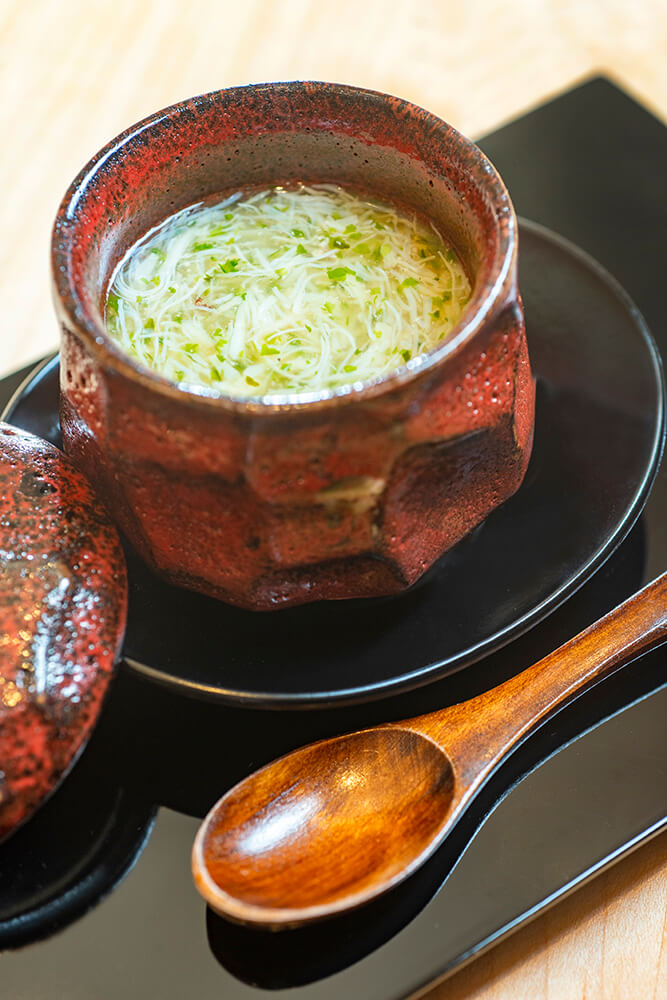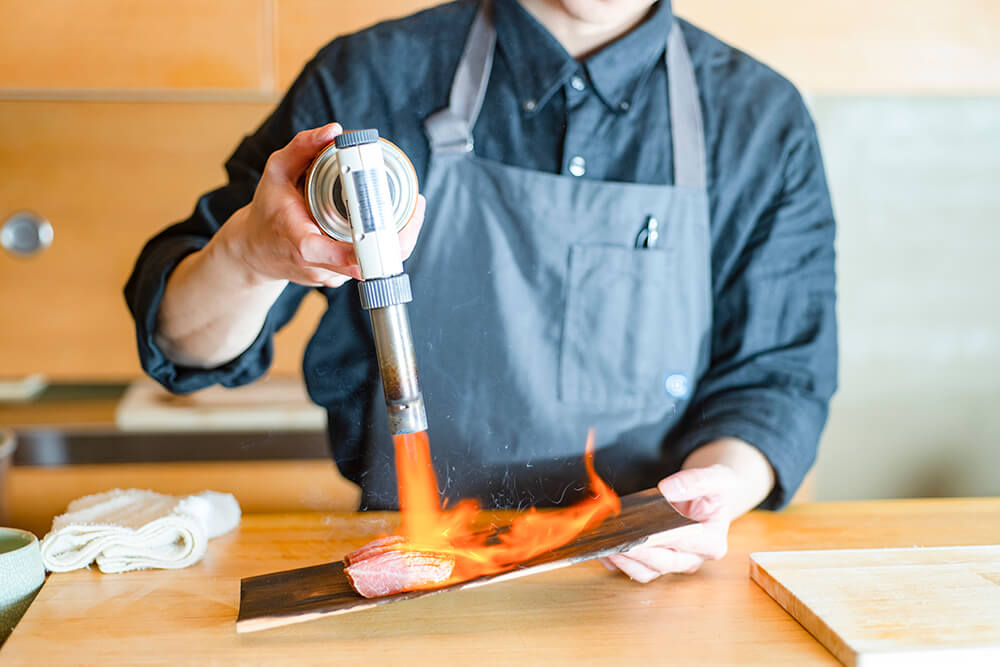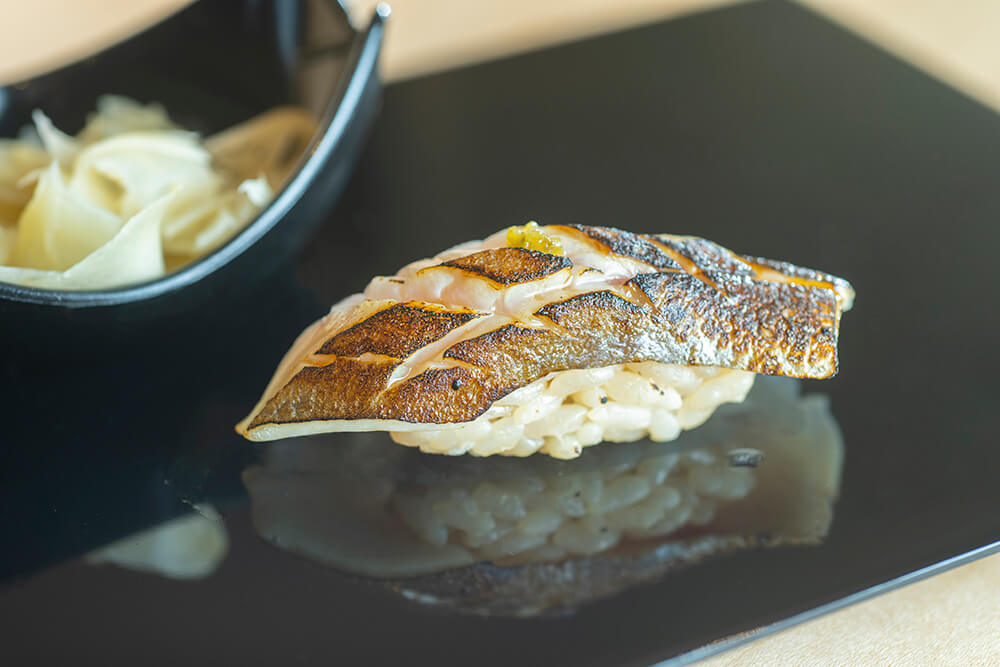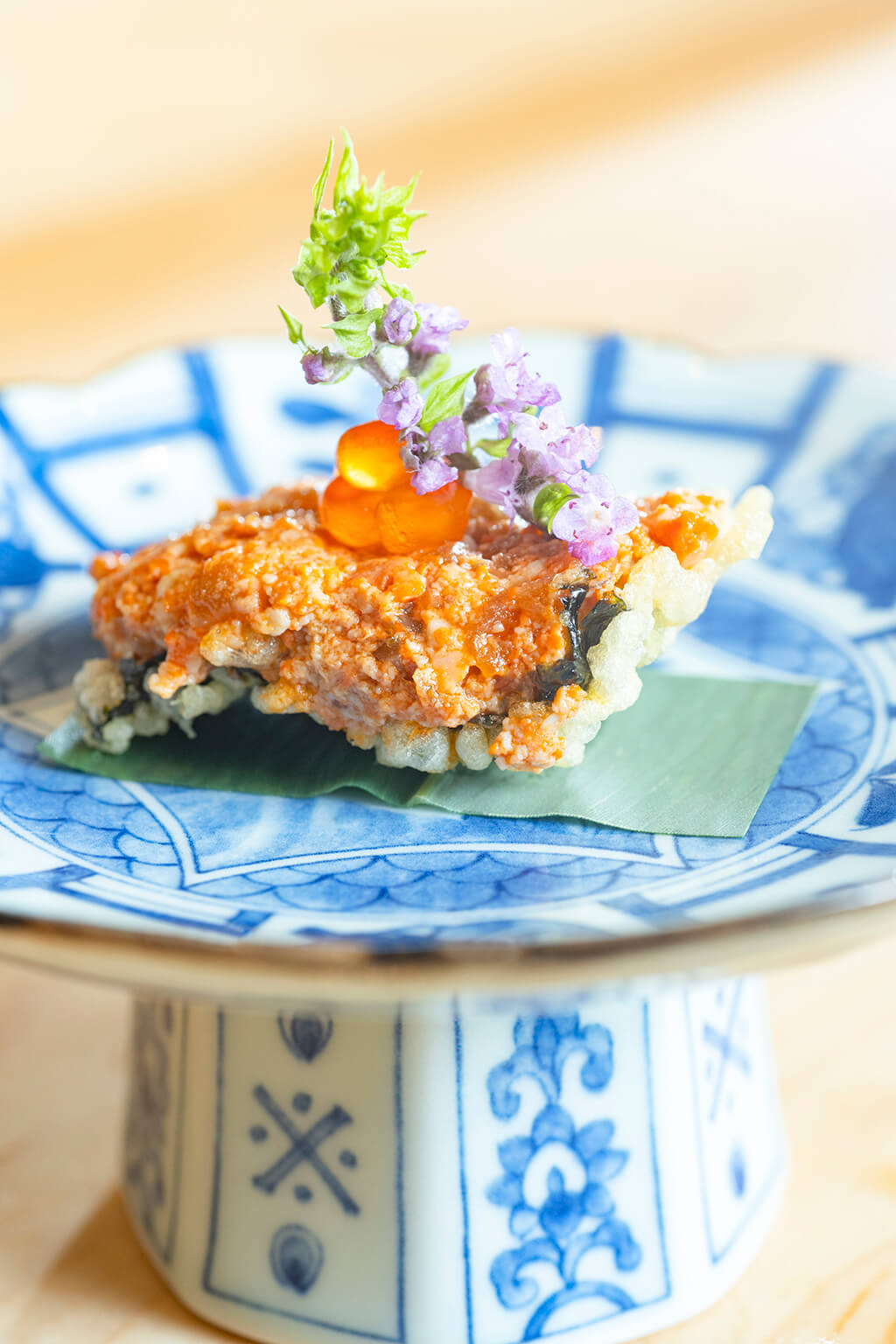Words by Elaine Wu
The Peninsula certainly has no shortage of sushi restaurants. But head chef and co-owner of Sushi Ai in Redwood City, Yong (Brandon) Wu, says he offers an experience like no other in this part of the Bay Area. “Here, we focus on dry-aging,” he explains. “We’re conditioning the fish so the moisture content on the exterior of the fish dries out and the enzymes and connective tissues break down. That’s when the true flavor of the fish comes through.”
While attending college in San Francisco, Brandon started working as a server at his friend’s sushi restaurant. When there was a lull during service, he would watch the sushi chefs working. “It’s amazing how a block of fish could be turned into a piece of art,” he recalls. “To me, Japanese food is an art, especially in an omakase setting.”

In Japanese, the word “omakase” means to trust all the details to the chef. It usually involves a more intimate and interactive dining experience that highlights the skill and artistry of the sushi chef. Multiple curated courses of various nigiri (a slice of raw fish placed atop a dollop of sushi rice) are served based on seasonality, freshness and the whims of the chef.
“Opening an omakase restaurant was a personal goal of mine,” says Brandon. “I love serving people one course at a time and seeing their reaction. Nothing is rushed. Guests take their time, chat a little and enjoy their food. It’s a different setup than the usual casual Japanese restaurant. I love it so much.”

After training for three years with Michelin-starred sushi chef Mitsunori Kutsakabe while working at his namesake restaurant, Brandon eventually made his way to another eatery in San Francisco that dry-aged some of its fish. “Dry-aging beef became so popular a while back and I would always question why no one was doing that to fish,” recalls Brandon. “I found it fascinating how food could be changed through science.”
These days at Sushi Ai, a large standalone machine that uses UV light, salt blocks and a constant flow of circulating air is what Brandon uses to dry-age most of the fish the restaurant serves. But not everything gets this treatment. “If dry-aging doesn’t add anything to the fish, then I will serve it fresh and traditionally,” he says. “Shellfish, for example, doesn’t need it.”
The process transforms the fish in some unexpected ways. “For example, if you dry-age saba (mackerel), it actually makes the flavor milder and butterier,” he explains. “The true umami of the fish comes through. It also makes the flesh more tender. And if you dry-age some types of fish with the skin on for two to three days, the skin gets very crispy. That’s a nice bonus.”

Though his techniques might seem a bit avant-garde for sushi purists, Brandon insists his intention is to honor the history and craft of sushi. “We love to mix things up and use modern refrigeration and dry-aging methods,” he says. “But at the same time, we still want to incorporate tradition and respect for Japanese food in everything we serve.”
The menu changes frequently, but signature items like the braised ankimo (monkfish liver), soy sauce-cured fatty tuna, and mandarin orange snapper make frequent appearances. At $175 per person for a total of 18 courses (10 pieces of nigiri served individually, several small plates, soup and a dessert), Brandon wants his guests to leave satisfied and delighted after having experienced something new and surprising.

Despite all the nearby competition, he’s not worried about solidifying Sushi Ai’s place in the community. “Even if I didn’t do dry-aging, the flavor of every restaurant is different,” Brandon says confidently. “We could all serve the same piece of salmon from the same fish vendor, but the end result—because of our different methods, techniques and ideas—would all taste totally different.”
The word “ai” means “love” in Japanese, and it’s at the center of everything Brandon does at Sushi Ai. “I love what I do and that’s the meaning behind our name,” he explains. “Do what you love and love what you do.”
This traditional Japanese steamed egg custard recipe serves one but can easily be doubled or multiplied for additional servings.
CHAWANMUSHI Ingredients 1 egg ½ cup dashi (see note) 2 teaspoons mirin (see note) 2 teaspoons soy sauce Whisk together all the ingredients and then pour mixture through a fine-mesh strainer. If you skip straining it, you won’t achieve the smooth and fluffy texture. Pour the mixture into a ramekin and place it in a steamer or a large pot with an inch or two of boiling water. Cover and steam for nine minutes. Carefully remove from the heat and serve. Note: Dashi is a fish stock made from bonito flakes and kombu (dried sea kelp). Find powdered dashi and mirin (sweetened sake) at Japanese specialty markets and many large supermarkets.


